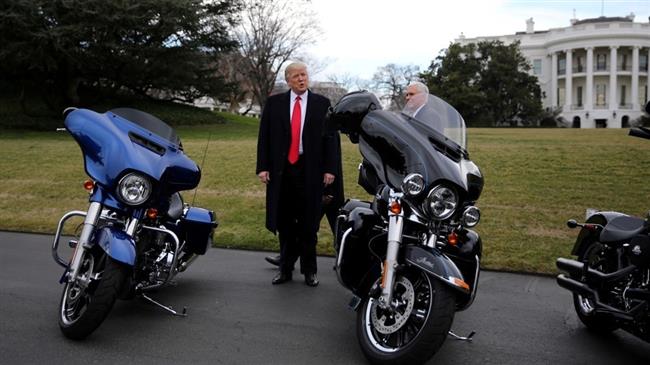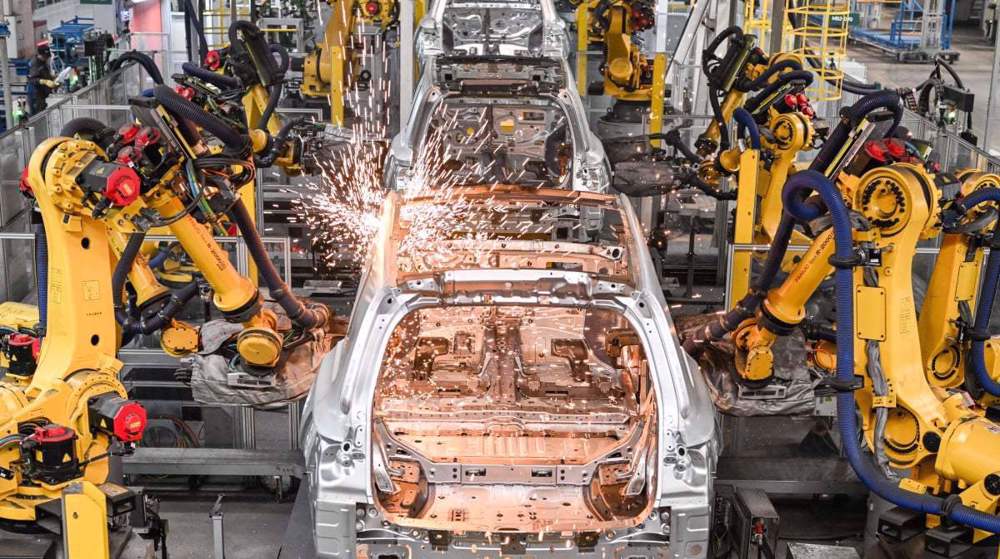Autarky and trade wars: What does history show us? Part II
By Mahdi Amirisefat
US President Donald Trump has just officially announced steep tariffs on imported steel and aluminum. Back in March, the US President asserted that trade wars are easy to win tweeting, "when a country (USA) is losing many billions of dollars on trade with virtually every country it does business with, trade wars are good, and easy to win.”
"When we are down $100 billion with a certain country and they get cute, don't trade anymore – we win big. It's easy!"
In the previous section I had a brief discussion about the theoretical implications and basis of economic protectionism under the pretext of advocating and backing domestic production, regardless of the expenses it imposes on the national economy and the livelihoods of citizens. When such policies are pursued broadly and aggressively they are labeled as “autarky.” The US is yet far from becoming an autarky, but pursuing protectionist policies by a country that has always been an advocate of globalization, free trade, open markets and laissez-faire economics via a Republican president might seem a surprising move.
I argued, Trump’s move is not as far-fetched and baseless as it might initially seem. Based on the Heckscher–Ohlin theorem, building on David Ricardo's theory of comparative advantage, the citizens of a country left to themselves and the free market, will export products that use their abundant and cheap factors of production (either capital or labor), and import products that use the country’s scarce factors (that again can be either capital or labor) as they are cheaper to import than produce domestically. This is exactly where the government might choose to disrupt the natural choice of citizens and “protect” the nation’s economic sector that relies on scarce factors, like protecting the steel industry. The problem of course is that other countries will retaliate by imposing their own tariffs thus hurting the majority of consumers and those sectors which are not protected by the government. For example and as a response to Trump’s tariffs, the European Union has vowed to impose its own tariffs on iconic US products like Harley-Davidsons, Kentucky bourbon and blue jeans.
But besides the theoretical implications and possible scenarios where economic protectionism through tariffs might work or have a political incentive for a politician who supports such policies (my previous article), in this article I will briefly look at the historical outcomes of protectionist policies and actual trade wars. I will also inquire whether such trade wars in the past have been won by countries who have initiated such economic conflicts.
Smoot-Hawley Tariff Act of 1930
In response to the dire financial situation of the 1930s, Congress passed the Smoot-Hawley Tariff Act of 1930 raising already high tariffs on over 20,000 imported goods to an average 40 percent. The immediate outcome of Smoot-Hawley was reciprocal measures by European nations. Canada and other American trade partners declared their own trade war on the US, retaliating with crippling tariffs on US goods that were exported to their countries. Such a prompt retaliation resulted in a 61 percent decrease of US exports from 1929 to 1933 crippling US production and agriculture. Because of such a drastic influence on dampening exports, the tariffs were repealed in 1934. Interestingly, the Soviet Union, the arch-enemy of the US at the time, gained much more from Smoot-Hawley than anyone would expect. Many Western countries at the time were reluctant to trade with the new emerging Communist state after its 1917 revolution and the rise of the Bolsheviks. However, European nations like Italy which were displeased with the draconian US tariffs, initiated trade ties with the former Soviet Union. Basically, Smoot-Hawley not only hurt US exports and destroyed global trade (world trade decreased by some 66% between 1929 and 1934), but also assisted isolated enemies of the US. This is why almost all economists and historians agree that Smoot-Hawley was a total disaster. Some have even claimed the 1930 tariffs contributed to the occurrence of World War II:
“These dire economic straits around the world increased antagonisms between countries, led to nationalist economic policies designed to impoverish other nations, facilitated the rise of fascist strongmen promising to restore economic growth by any means necessary, and contributed to the outbreak of World War II.”

Italy declares trade war on France
After Italy’s unification in 1871, the country decided to “protect” its new national industries from what it perceived were threats of rival states. The main threat was seen to come from France, an industrialized international power of the time. Italy proposed tariffs as high as 60 percent in order to prevent any infiltration of its domestic market by French goods that were superior to domestic production. The French responded back with their own tariffs that resulted in the famous 1882 Méline tariff law. Although the bourgeoning proletariat movements of the 1880s and subsequent pressure by unions and industrialists on the French government should also be accounted for, Italy’s protectionist policies caused a domino effect that had repercussions all across Europe. Due to the Franco-Italian trade war, exports, hence production decreased; and as a result countries that provided the two warring nations their needed supplies also felt the burn as demand for their goods shrunk. An even more important outcome of the tariffs between France and Italy -- that continued by France long after Italy removed its tariffs -- was that Italy moved closer to Germany and the Austria-Hungary empire on the brink of WWI. In both World Wars, Italy was an ally of Germany and its economy dependent on the Germans.
Malaysia and Iran tariffs on automobiles
Many developing countries in the 20th century pursued protection for what they perceived as their “infant industries.” Protection for infant industries has been prevalent among many countries and for various goods. However, high tariffs for protecting the infant industry usually result in opposite outcomes: the infant remains a baby and the protected industry becomes retard. Many believe this has been the case for American steel and the auto industry in Malaysia and Iran, where high import tariffs have resulted in subpar technologies and unsafe cars, especially in the later case where imported vehicles only have a 6% share of the local auto market due to high tariffs and taxes. Low quality car production became such an issue in Iran that back in January the Iranian Financial Times daily reported that Iran’s Traffic Police chief announced license plates will not be issued for 25 substandard models produced in the country.

Protection, even when intended to protect infant industries, usually fails to achieve its goals, unless protectionist policies are temporary and the training wheels are removed so the infant industry could eventually grow into an adult and compete in the international market without the help of government imposed barriers against rivals.
Japan’s successful protectionism: An outlier?
Up until the 1990’s Japan was seen as a successful case of protecting what it deemed was its infant industry, even after those infant industries had grown and flourished, to name, its automobile industry. In response, many economists have attempted to illustrate that Japan is an outlier in the sense that up until the 90s when it changed its protectionist policies because of American and international pressures, it had pursued closure under the protection and support of the United States based on Washington’s Cold War policy of supporting allies to bolster their economies in response to the Soviet threat.

With the demise of the Soviet Union, such policies give way to free market mechanisms and Japan had to adapt to the new realities of international trade by lifting tariffs and ending government subsidies, or policies entailing guaranteed buying of domestic production.
So even if Japan’s closed markets helped it grow its domestic production overtime, such an achievement was not a result of pure economic measures but was a result of a certain political economy that was particular to the Cold War environment which cannot be repeated in the contemporary era.
Trade wars are not that good, and not so easy to win
President Trump has claimed trade wars are “good,” and it is “easy” to win them. This seems not the case. Besides the almost prevailing theoretical arguments against economic protection, the majority of historic cases point to the negativity of protectionist policies, both for the initiator and those impacted by such policies, especially when such policies become so intense through unconventionally high tariffs that they result in international trade conflict, aka, trade wars. In addition to the historical facts that indicate trade wars via protectionist policies are not such a good idea, the results of trade wars illustrate that they usually do not have clear winners, and even when there seems to be a winner -- like the Italy-France case where many have said France won the trade battle – the unintended destructive consequences outweigh the supposed gains.
Hamas dismisses US accusation of obstructing ceasefire in Gaza
Gaza solidarity protests sweep US universities despite police crackdown
Tension flares in India after Modi's anti-Muslim hate speech amid elections
Iran, Pakistan to bring peace, stability to region through cooperation: Raeisi
'Regrettable': Iran slams EU sanctions, says bloc satisfying criminal Israeli regime
Hamas to survive as Israel fails to destroy command centers, tunnels: US media
April 22: ‘Axis of Resistance’ operations against Israeli occupation
N Korea holds first ever 'nuclear trigger' drills, simulates counterattack











 This makes it easy to access the Press TV website
This makes it easy to access the Press TV website